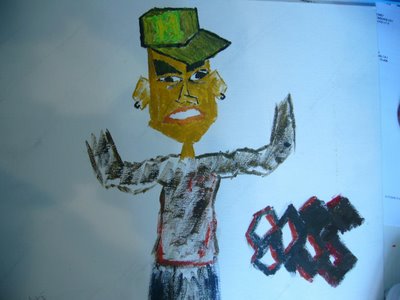Biography

Jaime Vives Piqueres is currently working as a computer technician in Valencia (Spain). He is a 3D graphic artist and is addicted to Ray Tracing. Started as an hobby, Jaime spends all his free time working and creating POV-Ray (Persistence of Vision Raytracer is a high-quality, totally free tool for creating stunning three-dimensional graphics) scenes. In 1994, he first heard about ray tracing when he was exploring stereogram and figured out that POV-Ray served stereogram to create its images. And therefore, he installed POV-Ray and started exploring. Jaime believes that raytracing with POV-Ray was much cheaper and, the most important, more satisfying for him. Therefore, he gave up his musical hobby some years ago, and devotes all his free time is now for POV-Ray.
Artist Statement None
What is Ray Tracing?
As stated in Wikipedia.org, Ray tracing is “a general technique from geometrical optics (behavior and properties of light) of modelling the path taken by light by following rays of light as they interact with optical surfaces.” It is used in the design of optical systems, such as camera lenses, microscopes, telescopes and binoculars. It works by tracing, in reverse, a path that could have been taken by a ray of light which would intersect the imaginary camera lens.
What is POV-Ray?The Persistence of Vision Raytracer, or POV-Ray, is a ray tracing program available for a variety of computer platforms. It was originally based on DKBTrace (command line ray tracing program), written by David Kirk Buck and Aaron A. Collins. Jaime uses this program along with several image rendering programs to create his art.
Computing ProcessFirstly, Jaime visualizes the real world and to observe the surroundings. One he gives the overall picture in his mind, he would use a text editor called SciTe to type the description of the objects using the POV-Ray language. Inputting the text file he created into the POV-Ray raytracer will help to render the scene description into a graphic format (file). The difficulty of understanding the information needed in the text file of the 3D description could be to its extreme but once one learns the necessary techniques and skills, it is only the “entering the data directly in 3D form.” Creating the objects of his art, Jaime recently started using Wings3D, which is very different and simple to use.
Jaime also uses The Gimp to create or retouch height and material maps used into the scene.
All that is done curently with an AMD 64 X2 3800+ and an Intel P4EE Dual Core, both running Linux Fedora Core 5, and using the latest versions of POV-Ray and MegaPOV, compiled from sources for each platform.
 Jaime has included a set of features such as fake studio-like lighting equipment, like umbrelas and softboxes. It includes also several pre made arrangements for the most typical studio layouts, wich can be used directly with your own objects, or to render .hdr maps to light your already existing scenes. There is an example scene showing the usage of both methods, and also a tool scene to generate the .hdr maps.
Jaime has included a set of features such as fake studio-like lighting equipment, like umbrelas and softboxes. It includes also several pre made arrangements for the most typical studio layouts, wich can be used directly with your own objects, or to render .hdr maps to light your already existing scenes. There is an example scene showing the usage of both methods, and also a tool scene to generate the .hdr maps.  Jamie had been listed in POV-Ray Hall of Fame for his art using POV-Ray. On numerous occasions, he has been rated within the top 5 in the Internet Ray Tracing Competition (IRTC) where you can submit still images or animations. In 1999, Jaime created and submitted “Landmark” which was ranked 4th overall.
Jamie had been listed in POV-Ray Hall of Fame for his art using POV-Ray. On numerous occasions, he has been rated within the top 5 in the Internet Ray Tracing Competition (IRTC) where you can submit still images or animations. In 1999, Jaime created and submitted “Landmark” which was ranked 4th overall.
Here is a list of the different parts and the techniques used for each:
+ RIVER
Height_field + fog. used the technique of contiguous height_fields to build the long water surface. A underwater fog was added to make the transparence less uniform.
+ BRIDGE Height_fields.
The idea for the bridge was really obvious: the scene seemed to want it. Is done with 3 height_fields and some cylinders.

Source Code
// *** dangerous bridge (distant object = low detail) ***
union{
cylinder{<0,0,0>,<0,50,0>,2 translate <-255,0, 10>}
cylinder{<0,0,0>,<0,50,0>,2 translate <-255,0,-10>}
cylinder{<0,0,0>,<0,50,0>,2 translate <>}
cylinder{<0,0,0>,<0,50,0>,2 translate <>}
cylinder{<0,0,0>,<0,40,0>,2 translate -40*y rotate -45*z translate <-255,40, 10>}
cylinder{<0,0,0>,<0,40,0>,2 translate -40*y rotate -45*z translate <-255,40,-10>}
cylinder{<0,0,0>,<0,40,0>,2 translate -40*y rotate 45*z translate <>}
cylinder{<0,0,0>,<0,40,0>,2 translate -40*y rotate 45*z translate <>}
height_field{
tga "hf_bridg"
translate -.5
water_level 0.1
rotate -90*x
scale <512,128,20>
translate -10*y
}
height_field{
tga "hf_brid2"
translate -.5
water_level 0.1
rotate -90*x
scale <512,128,1>
translate <0,-10,10>
}
height_field{
tga "hf_brid3"
translate -.5
water_level 0.1
rotate -90*x
scale <512,128,1>
translate <0,-10,-10>
}
texture{T_Wood7}
scale 0.75
translate <-10,610,1000>
}
Here's more artwork created by Jaime. Both of below art have won top prize at the IRTC and the second image, Bonsai, is treasured at the hall of fame. Comparing these two top artwork, I like both very much but I'm slighty in favor of the second one. It's more more realistic with almost prefect color combinations, lighting and image rendering. The first art is in fine detail as many small elements make up the artwork. It seems like Jaime is trying to protray a message with the first art.


References: Wikipeidia, Jamie's Site


 Heres some art I created recently...
Heres some art I created recently...


